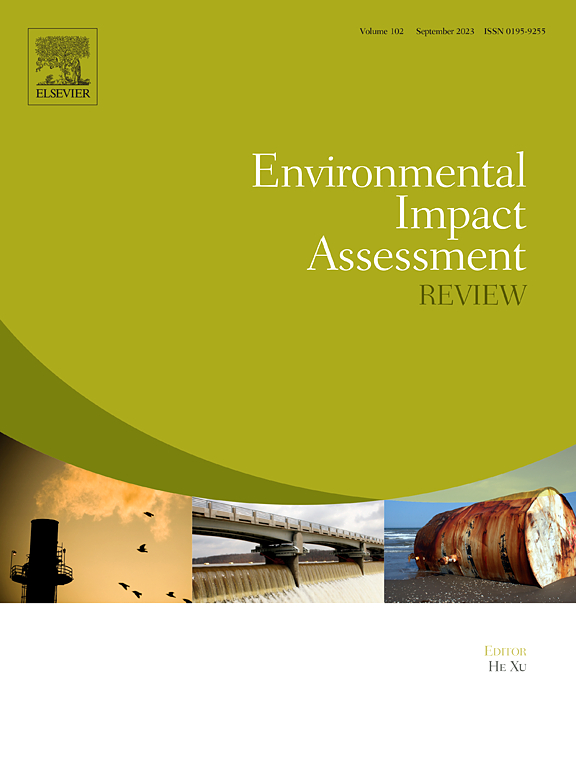中国水泥运输碳排放追踪:历史评估与未来模拟
IF 11.2
1区 社会学
Q1 ENVIRONMENTAL STUDIES
引用次数: 0
摘要
中国是世界上水泥生产和消费规模最大的国家,水泥运输规模也很大。水泥运输的能耗和碳排放不容忽视。本研究通过排放因子法计算了 2010 至 2020 年全国和各省水泥运输碳排放量,通过对数平均迪维西亚指数(LMDI)量化了各种影响因素的贡献,并结合未来水泥消费需求和运输政策导向,进一步进行情景模拟,预测未来趋势。研究结果表明,2014年全国水泥运输碳排放达到峰值1854万吨CO2(公路运输贡献率超过80%),各省水泥运输碳排放呈现东高西低的空间格局。水泥运输量、运输结构、运输强度和碳排放因素共同推动了水泥运输碳排放的增长,而能源消耗强度则起到了重要的抑制作用。在低、中、高水泥消费需求情景下,2021-2050年水泥运输可实现的累计碳减排量差异不大(约600-1000万吨CO2),而在运输结构优化和低碳蓝图的运输政策导向情景下,未来水泥运输可实现的累计碳减排量差异较为明显(约4000-5000万吨CO2)。因此,与控制未来水泥消费需求相比,提高运输车辆能效、优化运输结构、加强清洁能源应用等运输侧政策措施可实现更大的碳减排潜力(累计碳减排量约为9000万~1.4亿tCO2)。本研究为完善中国交通领域碳峰值和碳中和行动计划提供了决策参考。本文章由计算机程序翻译,如有差异,请以英文原文为准。
Tracking cement transportation carbon emissions in China: Historical assessment and future simulation
China has the largest scale of cement production and consumption worldwide; likewise, its scale of cement transportation is also large. The energy consumption and carbon emissions of cement transportation cannot be ignored. This study calculates cement transportation carbon emissions from 2010 to 2020 at the national and provincial levels via the emission factor method, quantifies the contributions of various influencing factors via the logarithmic mean Divisia index (LMDI), and further conducts scenario simulations to forecast future trends by integrating future cement consumption demand and transportation policy orientations. The research results showed that national carbon emissions from cement transportation reached a peak of 18.54 million tCO2 in 2014 (highway transportation contributed more than 80 %), and the cement transportation carbon emissions in various provinces exhibited a spatial pattern of high in the east and low in the west. The cement transportation volume, transportation structure, transportation intensity, and carbon emission factors jointly drive the growth of cement transportation carbon emissions, whereas energy consumption intensity plays an important inhibitory role. Under low, medium and high cement consumption demand scenarios, the difference in the cumulative carbon emission reductions achievable in cement transportation from 2021 to 2050 is not significant (approximately 6 to 10 million tCO2), while under transportation policy-oriented scenarios of transportation structure optimization and low-carbon blueprint, the variation in the cumulative carbon emission reductions achievable in future cement transportation is relatively obvious (approximately 40 to 50 million tCO2). Therefore, compared with controlling future cement consumption demand, transportation-side policy measures such as improving the energy efficiency of transportation vehicles, optimizing the transportation structure, and enhancing the application of clean energy can achieve greater carbon reduction potential (the cumulative carbon emission reduction is approximately 90 to 140 million tCO2). This study provides a decision-making reference for refining China's carbon peak and carbon neutrality action plans in the transportation sector.
求助全文
通过发布文献求助,成功后即可免费获取论文全文。
去求助
来源期刊

Environmental Impact Assessment Review
ENVIRONMENTAL STUDIES-
CiteScore
12.60
自引率
10.10%
发文量
200
审稿时长
33 days
期刊介绍:
Environmental Impact Assessment Review is an interdisciplinary journal that serves a global audience of practitioners, policymakers, and academics involved in assessing the environmental impact of policies, projects, processes, and products. The journal focuses on innovative theory and practice in environmental impact assessment (EIA). Papers are expected to present innovative ideas, be topical, and coherent. The journal emphasizes concepts, methods, techniques, approaches, and systems related to EIA theory and practice.
 求助内容:
求助内容: 应助结果提醒方式:
应助结果提醒方式:


